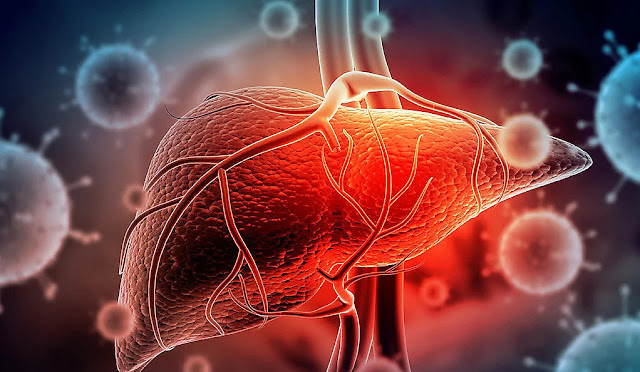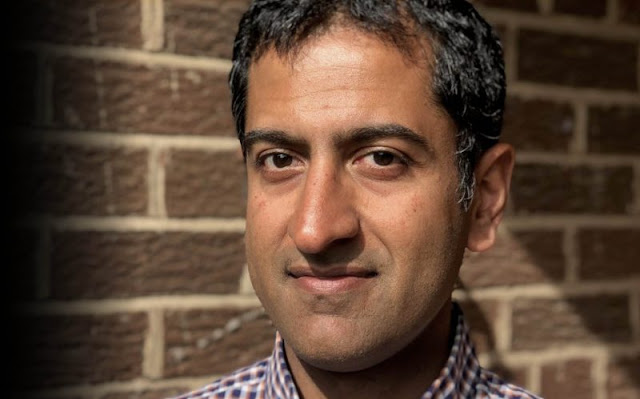New Treatment for Scotland's Journey to Conquer Liver Disease
Composed by Feature Donor, MRC Senior Clinical Individual and Expert Hepatologist Dr. Prakash Ramachandran of the College of Edinburgh.
Liver illness is an enormous worldwide medical condition, influencing an expected 1.5 billion individuals and bringing about north of 2,000,000 passings yearly. That rate is increasing, driven by liquor related liver sickness and the gigantic expansion in non-alcoholic greasy liver illness (NAFLD) related with weight and diabetes.
No matter what the reason, persistent harm to the liver outcomes in scar tissue, or fibrosis, shaping, which frequently prompts, and velocities up, confusions like liver disappointment or liver disease.
Since scarring is a particularly significant consider liver sickness movement, much exertion is currently being centered around growing new therapies to attempt to decrease how much fibrosis in the liver. Many medications have been tried in patients, yet no medicines have succeeded.
This is incompletely because of the intricacy and term of the illness, with various variables managing fibrosis over numerous years or even many years. By and large, the field has likewise been extremely dependent on models of infection to comprehend the science, which frequently don't repeat the intricacy of human physiology.
Lately, enormous advances in biomedical innovations and information examination approaches accessible to clinicians and scientists are making it conceivable to concentrate on understanding examples at uncommon profundity and goal, giving new experiences into liver sickness pathophysiology. These information types will shape the reason for another tranche of treatment focuses throughout the impending years.
Scotland's Novel Situation for Liver Illness Research
In Scotland, we at present have a conjunction of variables - information limit, clinical and scholastic skill, and innovation - that put us in shaft position to decipher our magnificent liver sickness research and to foster the creative new therapies we really want.
We, right off the bat, have phenomenal admittance to human examples where, frequently, specialists just approach creature tests. We have consents as a component of a review I'm driving called Liver Cell Examination (LiCA) to take a piece of a patient's liver biopsy and additional blood tests and use them to develop a high-goal profile of changes in cells, qualities, and proteins in various sorts of liver illness and at various phases of sickness movement. We can likewise interface these progressions to clinical metadata. What's more, we additionally approach chronicled biopsy tests and their connected clinical metadata.
This admittance to clinical metadata is critical. Dissimilar to wellbeing frameworks somewhere else, the Scottish Public Wellbeing Administration is a solitary supplier, so it keeps information from all its wellbeing sheets - biopsies and results. This implies we can make sure about which pathways in the liver are related with various clinical results in a manner others can't.
Scotland is likewise leading moral wellbeing information sharing, with drives, for example, DataLoch and the Information Driven Development centers through the southeast locale City Arrangement and the SteatoSITE information house. With partners, for example, Teacher Jonathan Fallowfield we have utilized the last option, for instance, to distinguish gatherings of qualities in the liver which can anticipate the movement of NAFLD and the future improvement of liver sickness difficulties.
The third variable is our profiling ability. At the College of Edinburgh, we have critical skill in advancements, for example, single-cell or single-core RNA sequencing to concentrate on liver scarring in superior quality. Our past examination in patients with cutting edge fibrosis found sub-sorts of three key cells: white platelets called macrophages, endothelial cells - which line veins - and scar-framing cells known as myofibroblasts. Presently, we can study these, and different cells, across the full infection range.
We likewise approach the world's best spatial innovations. Utilizing the Akoya PhenoCycler-combination framework and soon the Nanostring CosMx spatial sub-atomic imager, we can concentrate on many markers on a solitary liver example. Applying these strategies to our patient biopsy tests will change how we might interpret liver fibrosis throughout the following couple of years.
We have a laid out organization of exploration steady hepatologists in Scotland who add to clinical examination. Disclosure studies can be quickly scaled and directed in numerous focuses. Edinburgh's Bioquarter, intended to unite clinicians, analysts, and patients in a single spot, is one such focus.
We likewise have major areas of strength for a record in related spinouts, like Goal Therapeutics, creating macrophage cell treatments; Stimuliver, utilizing pluripotent immature microorganisms, or SensiBile's biomedical gadget that can evaluate the nature of contributor's livers. Our Edinburgh scholastics are capably upheld by our commercialization administration, Edinburgh Advancements, which reinforces our ability to work with industry and make an interpretation of examination into certifiable arrangements.
Ultimately, and this isn't anything positive, Scotland has a high illness trouble. Unfortunately, we have one of the greatest paces of liver sickness in Europe, with a rising frequency, which, albeit not a selling point for our nation, builds the impulse for the counteraction and therapy of liver illness and fibrosis.
The Street to Changing Liver Illness Treatment
In malignant growth treatment, propels are being utilized '- omics' advances - estimating enormous quantities of qualities or proteins to illuminate a more separated way to deal with sickness. For liver sickness, as well, we desire to have the option to utilize qualities and proteins tracked down in patients' liver or blood to recognize which patients need therapy and which therapy choices are probably going to turn out best for them to decrease fibrosis and keep them from creating difficulties.
The test stays the heterogeneity and length of the sickness, as various patients might require a few mixes of therapies, and it can frequently require a very long time for a valuable impact to be distinguished, requiring clinical preliminaries consolidating enormous numbers throughout quite a while.
Scotland has the administrative system, coordinated effort with the Public Wellbeing Administration, powerful exploration framework, subsidizing support, and cooperative organizations to direct such preliminaries.
There is a lot of work to be finished, yet I trust here, in the strides of clinical trailblazers Fleming and Lister, we are particularly positioned to change liver sickness and fibrosis therapy and work on quiet results on a worldwide scale.
References
Ramachandran P, Dobie R, Wilson-Kanamori JR, Dora EF, Henderson BEP et al. Settling the fibrotic specialty of human liver cirrhosis utilizing single-cell transcriptomics. Nature. 575, 512-518 (2019).
Fallowfield JA, Kendall TJ, Jimenez-Ramos M, Turner F, Ramachandran P et al. SteatoSITE: a Coordinated Quality to-Result Information Center for Accuracy Medication Exploration in NAFLD, 18 April 2023, PREPRINT (Variant 1) accessible at Exploration Square [https://doi.org/10.21203/rs.3.rs-2805134/v1]
Cheemerla, S. furthermore, Balakrishnan, M. (2021) "Worldwide The study of disease transmission of Persistent Liver Illness", Clinical Liver Sickness, 17(5), pp. 365-370. doi: 10.1002/cld.1061.
Devarbhavi, H. et al. (2023) "Worldwide weight of Liver Illness: 2023 Update", Diary of Hepatology. doi: 10.1016/j.jhep.2023.03.017.
Scotland, P. (2023) Liver illness mortality - Liver sickness mortality - Distributions - General Wellbeing Scotland, Publichealthscotland.scot. Accessible at: https://publichealthscotland.scot/distributions/liver-illness mortality/liver-sickness mortality/#section-1 (Got to: 5 June 2023).
Dr Prakash Ramachandran is a MRC Senior Clinical Individual at the College of Edinburgh Place for Irritation Exploration and a Privileged Expert Hepatologist at the Illustrious Hospital of Edinburgh. He embraced clinical preparation at the College of Edinburgh, graduating in 2003. He consequently finished a Wellcome Trust subsidized PhD (2008-2011), a MRC Clinician Researcher Partnership (2016-2020) and was as of late granted a MRC Senior Clinical Cooperation (2022-2027) named "Remedial Focusing of Pathogenic Scar-related Macrophages in the Fibrotic Specialty of Persistent Liver Illness". His gathering's exploration is focussed on utilizing single-cell and spatial - omics ways to deal with concentrate on the job of the safe framework in directing liver injury and fibrosis. In particular, his work has characterized the heterogeneity of hepatic macrophages in ongoing liver sickness, distinguishing key populaces with organize fibrosis and fibrosis relapse.


0 Comments
Post a Comment